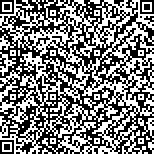| 引用本文: |
陆琳,盛佑祥,张良清,何舟.基于等速肌力测试分析不同频率电针对膝关节镜下前交叉韧带重建术后功能康复的临床疗效[J].湖南中医药大学学报,2018,38(9):1073-1076[点击复制] |
|
| |
|
|
| 本文已被:浏览 2999次 下载 954次 |
| 基于等速肌力测试分析不同频率电针对膝关节镜下前交叉韧带重建术后功能康复的临床疗效 |
| 陆琳,盛佑祥,张良清,何舟 |
| (深圳市南山区人民医院, 广东 深圳 518052) |
| 摘要: |
| 目的 比较2/100 Hz频率电针与2 Hz频率电针结合基础治疗与等速肌力训练对膝关节镜下前交叉韧带重建术后患者功能康复的临床疗效。方法 40例膝关节镜下前交叉韧带重建术后的患者随机分成A、B两组(各20例),A组予2 Hz、1 mA的疏波电针治疗,B组予2/100 Hz、1 mA的疏密波电针治疗,两组均结合等速肌力训练和基础康复治疗。连续治疗5 d为1个疗程,疗程间休息2 d,2个疗程后结束治疗。运用等速肌力测试分析治疗前后患侧股四头肌峰力矩(PT)、峰力矩体重比值(PT/BW)并运用膝关节Hss评分评价两组疗效。结果 治疗后,两组患者膝关节Hss评分均较治疗前提高(P<0.01),且B组提高幅度大于A组(P<0.01);B组患者治疗有效率高于A组(P<0.01);等速肌力测试结果提示两组患者患侧股四头肌的PT及PT/BW均较治疗前改善(P<0.01),且B组改善程度优于A组(P<0.01)。结论 电针结合基础治疗与等速肌力训练能明显提高膝关节镜下前交叉韧带重建术后患者患侧股四头肌肌力,促进功能康复,且2/100Hz频率电针在提高股四头肌肌力方面更有优势。 |
| 关键词: 前交叉韧带重建术 膝关节镜 电针 不同频率 等速技术 股四头肌 2/100Hz |
| DOI:10.3969/j.issn.1674-070X.2018.09.024 |
| 投稿时间:2018-03-28 |
| 基金项目:深圳市南山区卫生科技资助项目(南科研卫2016021)。 |
|
| Clinical Effect of Electroacupuncture at Different Frequencies on Functional Rehabilitation After Arthroscopic Anterior Cruciate Ligament Reconstruction:An Analysis Using Isokinetic Strength Test |
| LU Lin,SHENG Youxiang,ZHANG Liangqing,HE Zhou |
| (Shenzhen Nanshan People's Hospital, Shenzhen, Guangdong 518052, China) |
| Abstract: |
| Objective To investigate the clinical effect of electroacupuncture (2/100 vs 2 Hz) in combination with basic treatment and isokinetic strength training on functional rehabilitation after arthroscopic anterior cruciate ligament reconstruction. Methods Forty patients after arthroscopic anterior cruciate ligament reconstruction were randomly divided into group A (n=20) and group B (n=20). Group A was treated with low-frequency electroacupuncture (2 Hz, 1 mA), while group B received low/high-frequency electroacupuncture (2/100 Hz, 1 mA). In addition, both groups received isokinetic strength training and basic rehabilitation. These patients received two 5-day courses of treatment, with a 2-day rest period between two courses. The isokinetic strength test was used to evaluate the peak torque (PT) and peak torque-to-body weight ratio (PT/BW) of the quadriceps femoris on the affected side before and after the treatment. HSS score was used to assess the clinical outcome of the two groups. Results After treatment, a significant improvement in HSS score was observed in both groups (P<0.01), and group B demonstrated a significantly more improvement in HSS score than group A (P<0.01); group B had a significantly higher overall response rate than group A (P<0.01). After treatment, the isokinetic strength test indicated significant improvements in PT and PT/BW of the quadriceps femoris on the affected side in both groups (P<0.01), and the improvement was significantly more in group B than in group A (P<0.01). Conclusion In patients treated with arthroscopic anterior cruciate ligament reconstruction, electroacupuncture combined with basic treatment and isokinetic strength training can significantly improve the strength of the quadriceps femoris on the affected side and promote functional rehabilitation. Moreover, electroacupuncture at a frequency of 2/100 Hz is more effective than that at a frequency of 2 Hz in improving the strength of the quadriceps femoris. |
| Key words: anterior cruciate ligament reconstruction arthroscopy electroacupuncture differnt frequencies isokinetic technology quadriceps femoris 2/100 Hz |
|

二维码(扫一下试试看!) |
|




